-
Listening Limits: Exploring the Extremes of our Auditory Range
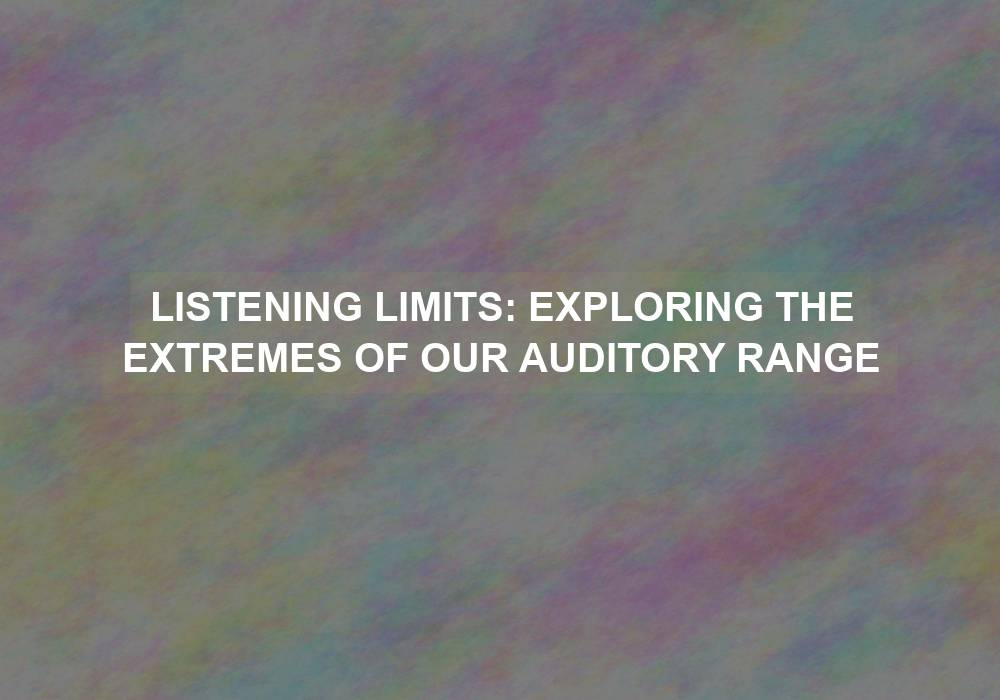
The human auditory system is a remarkable sensory mechanism that allows us to perceive and interpret sound. From the faintest whisper to the deafening roar of a jet engine, our ears are versatile instruments that enable us to experience the world of sound. In this article, we will delve into the fascinating topic of auditory…
-
From a Hum to a Screech: The Bounds of Human Hearing

Introduction Human hearing is an incredible sensory ability that allows us to perceive and interpret sounds from our environment. Our ears are intricate organs that can detect a wide range of frequencies and intensities, enabling us to communicate, experience music, and be aware of potential dangers. In this article, we will explore the fascinating bounds…
-
The Auditory Spectrum: Understanding the Human Hearing Range
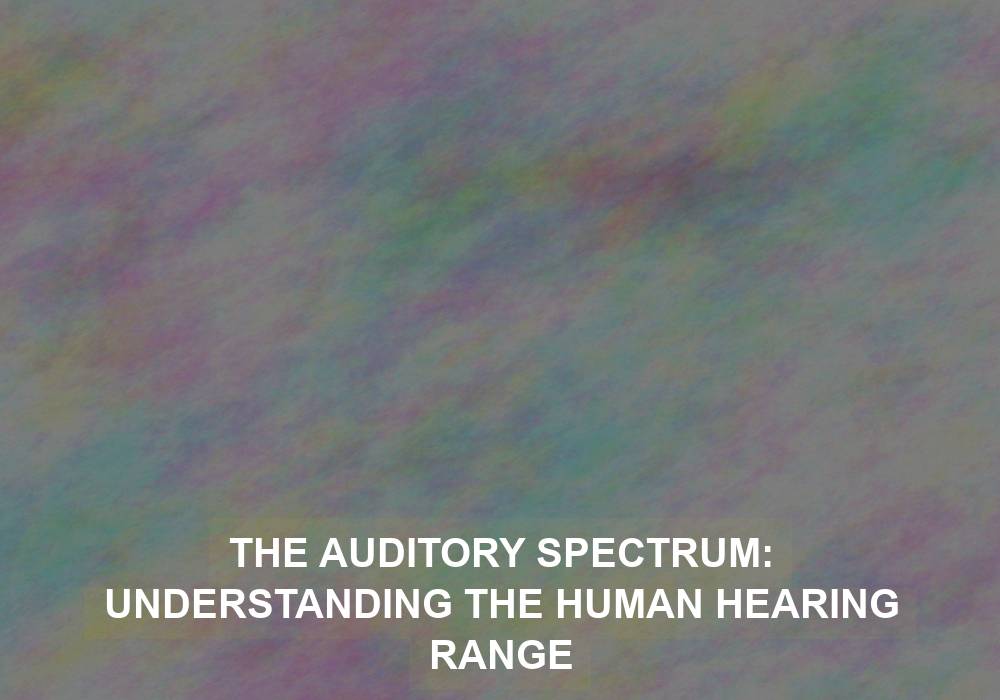
The human hearing range is an intriguing aspect of our auditory system that allows us to perceive sound. By delving into the different frequencies and levels within this spectrum, we can gain valuable insights into how we experience and interact with sound in our daily lives. The Basics of Sound and Frequency Sound, as we…
-
Decoding Sound: How We Perceive Frequency and Pitch
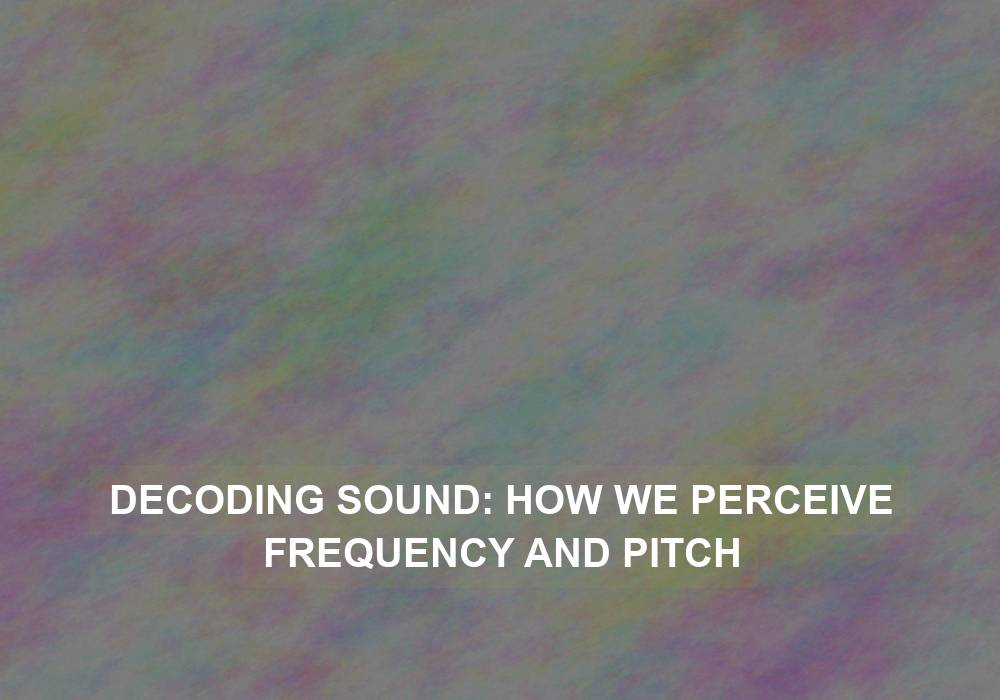
Sound is a fascinating phenomenon that plays a crucial role in our lives. It allows us to communicate, enjoy music, and perceive the world around us. But have you ever wondered how we perceive the different aspects of sound, such as frequency and pitch? In this article, we will delve into the intricacies of sound…
-
From Low Rumbles to High Whistles: Navigating Sound Frequencies
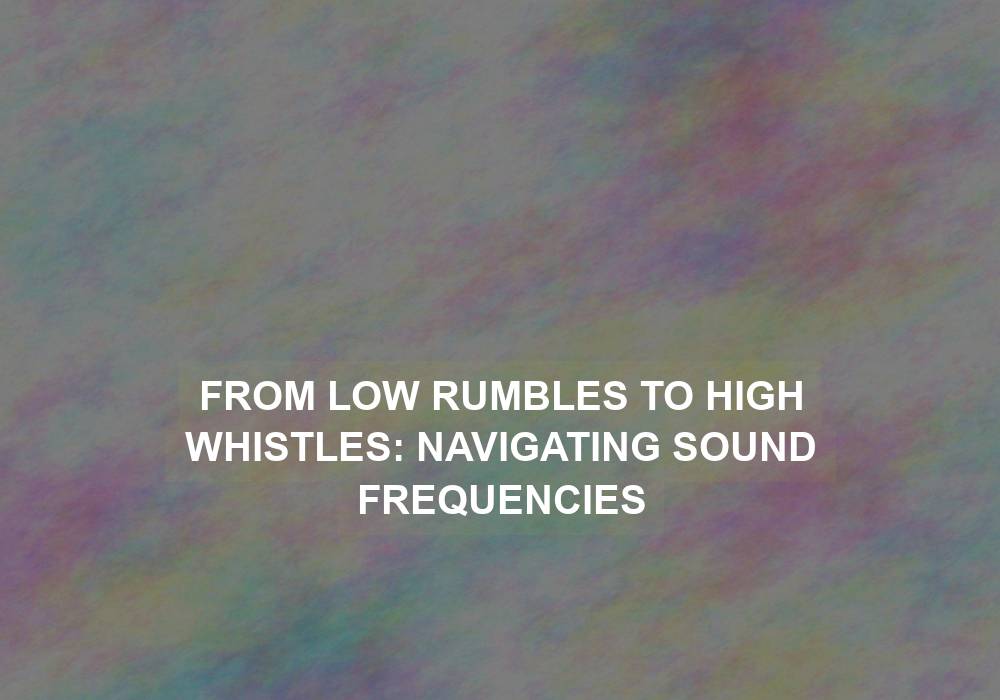
Sound frequencies play a significant role in our daily lives, impacting the way we perceive and experience the world around us. From the low rumbles of thunderstorms to the high-pitched whistles of birds, sound frequencies encompass a wide spectrum that captivates our senses. In this article, we will explore the fascinating world of sound frequencies,…
-
Tuning into Sound: The Relationship Between Frequency and Pitch
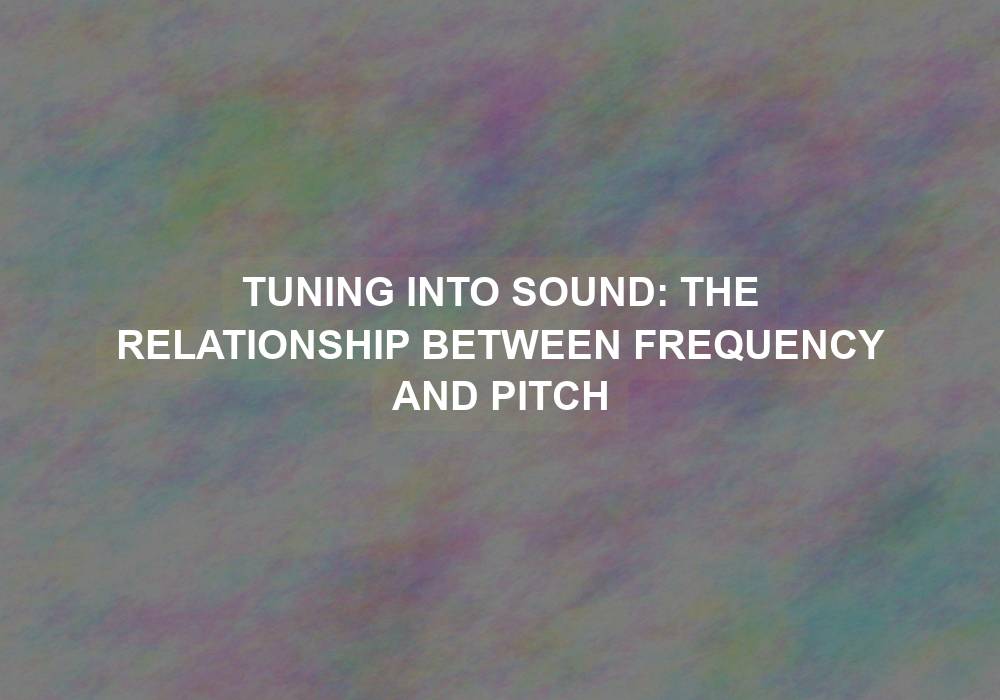
Sound is a fascinating phenomenon that surrounds us in our everyday lives. It encompasses everything from the cheerful chirping of birds in the morning to the soul-stirring melodies that uplift our spirits. But have you ever wondered how we perceive the pitch of different sounds and what determines their frequency? In this article, we will…
-
From Clatter to Consequences: How Loud Noises Impact Hearing

Loud noises have become an intrinsic part of our daily lives. From bustling cities to construction sites, and even our own leisure activities, we often find ourselves exposed to high volumes of noise. While we may not always realize it, these loud noises can have a detrimental impact on our hearing health. In this article,…
-
When Sound Strikes: Understanding the Risks of Noise Exposure
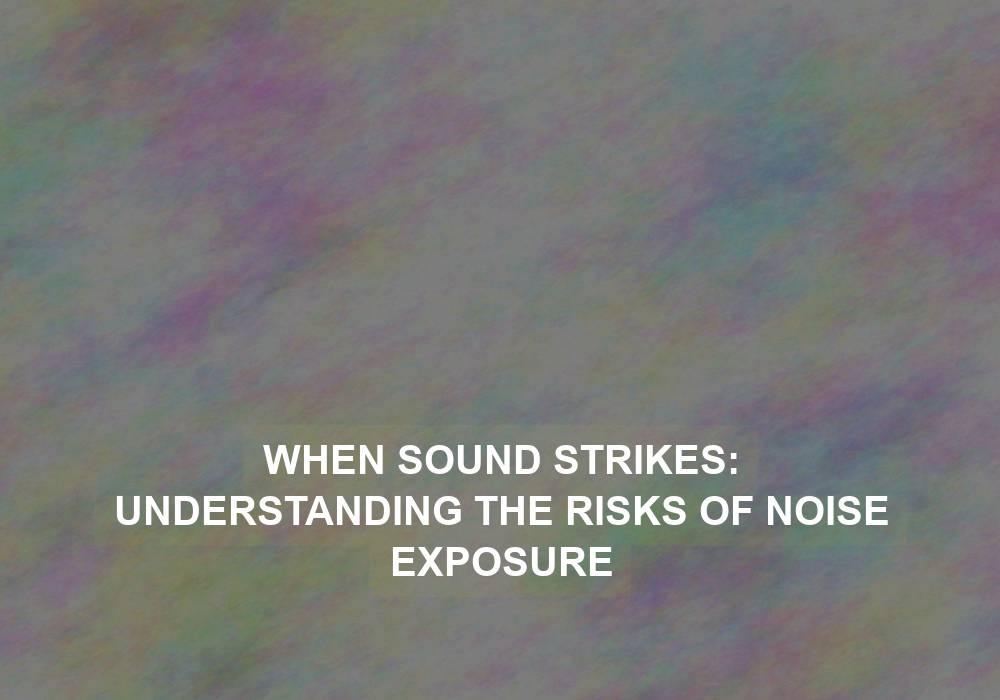
Noise is an inevitable part of our daily lives. From the bustling traffic on our commute to the blaring horns of city life, we are constantly exposed to various sound sources. While some sounds may be pleasant, prolonged exposure to loud noises can have detrimental effects on our health. In this article, we will delve…
-
Sonic Assault: The Dangers of Decibels in Daily Life

Noise pollution is an ever-growing concern in our modern society. From bustling city streets to crowded public spaces, our daily lives are bombarded with high levels of sound. While we may not always be conscious of it, prolonged exposure to excessive noise can have detrimental effects on our health and well-being. In this article, we…
-
From Hush to Harm: The Scale and Impact of Sound Levels
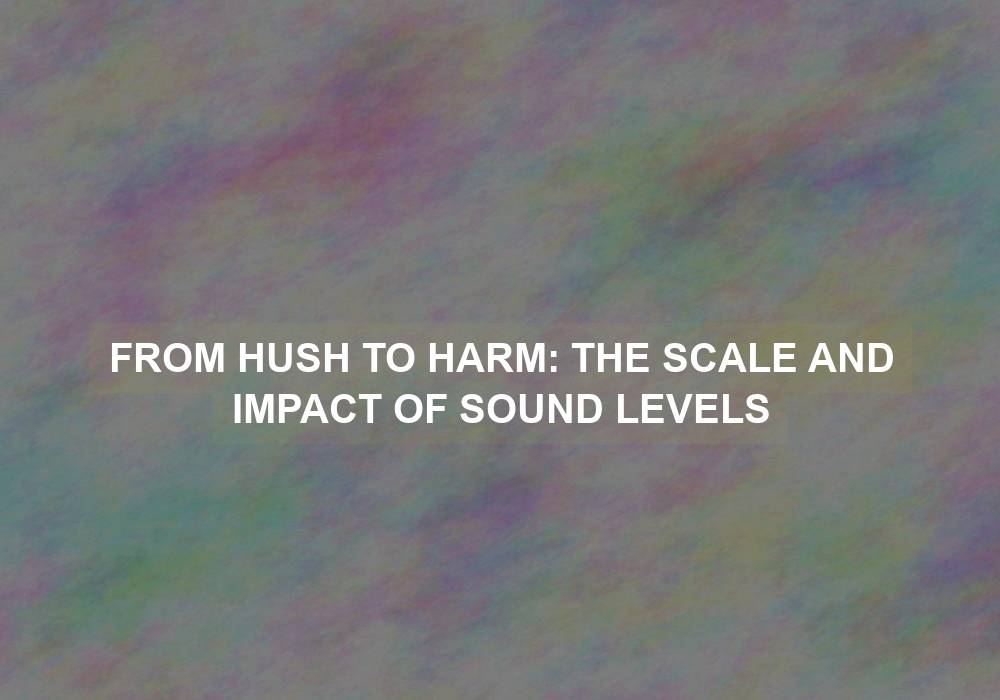
Sound is an essential aspect of our daily lives, but its effects can vary significantly depending on the intensity and duration of exposure. From the gentle rustle of leaves to the deafening roar of a jet engine, sound has the power to both soothe and harm. In this article, we will explore the scale of…
-
The Safe Sound Spectrum: Navigating the World of Decibels

Noise is an inevitable part of our daily lives, and it is crucial to understand the concept of decibels for ensuring our safety and well-being. Whether it’s the sound of traffic on busy streets, the blaring of music at concerts, or the constant hum of machinery in industrial settings, our ears are constantly exposed to…
-
Decibel Deciphered: Listening Safely in a Noisy World

In today’s fast-paced and noisy world, it is essential to prioritize our hearing health and take measures to prevent hearing damage. With the increasing prevalence of loud environments, such as concerts, clubs, and even daily activities like using headphones, it is crucial to understand the impact of decibel levels on our hearing and how to…
-
Tiny Tuners: Hair Cells and the Symphony of Sound in the Cochlea

The cochlea, a small spiral-shaped structure located in the inner ear, plays a crucial role in our ability to hear and perceive sound. Within the cochlea, a complex interplay of hair cells and auditory signals takes place, allowing us to experience the rich symphony of sound that surrounds us. In this article, we will delve…
-
Dancing Cells: How Cochlear Hair Cells Translate Sound

The human ear is an intricate and fascinating organ that enables us to perceive and interpret sound. At the heart of this remarkable process lies the cochlea, a snail-shaped structure located in the inner ear. Within the cochlea, a group of specialized cells known as cochlear hair cells play a vital role in translating sound…
-
Hairs that Hear: The Vital Role of Cochlear Hair Cells

The human auditory system is an intricate network of structures that allows us to perceive and process sound. At the heart of this system are the cochlear hair cells, which play a crucial role in our ability to hear. In this article, we will explore the significance of these tiny, delicate cells and how they…
-
From Airwaves to Brainwaves: The Auditory Transduction Process
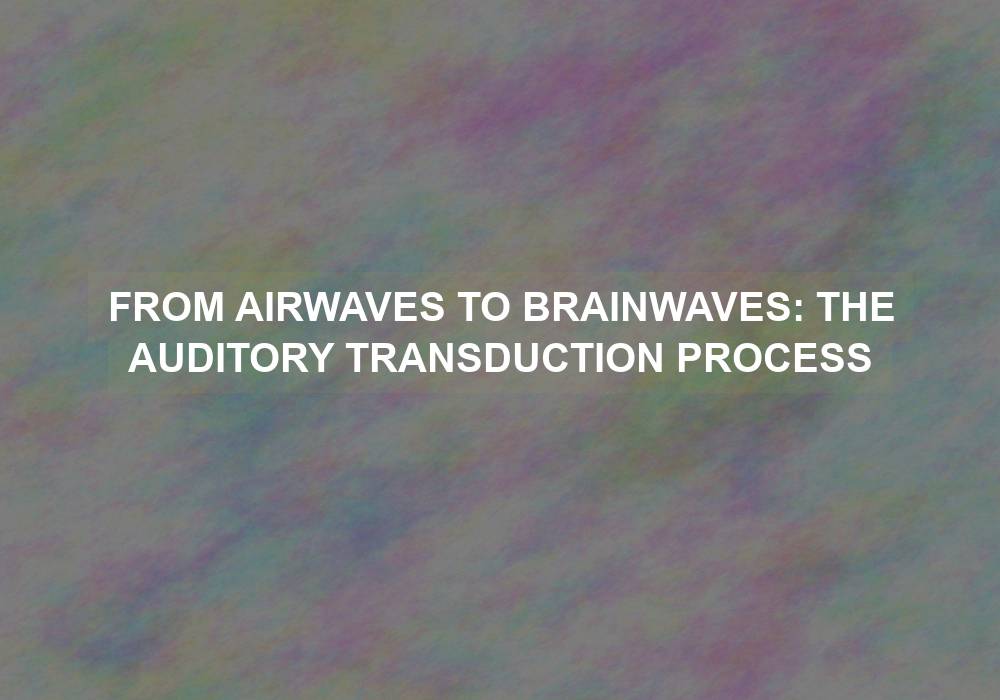
The auditory transduction process is a fascinating phenomenon that allows us to perceive and understand the world through sound. This complex process begins with the reception of airwaves and culminates in the interpretation of these signals in our brain. In this article, we will delve into the step-by-step journey of sound through the auditory system,…
-
Vibrations to Visionaries: The Journey of Sound in Our Ears

Sound, an intangible phenomenon that surrounds us every day, plays a crucial role in our lives. It has the power to evoke emotions, create connections, and shape our experiences. From the soothing melody of a lullaby to the thunderous applause at a concert, sound has the ability to transport us to different realms. But have…
-
Sonic Alchemy: Transforming Sound Waves into Brain Waves

In today’s fast-paced world, finding ways to relax and unwind has become more important than ever. Many people turn to various techniques to achieve a state of calm and tranquility, such as meditation, yoga, or mindfulness. However, there is an emerging trend that harnesses the power of sound waves to induce a deep sense of…
-
From Whisper to Roar: Navigating the Soundscapes of Life

In our daily lives, we often overlook the power and significance of sound. From the soothing whispers of nature to the deafening roars of a bustling city, soundscapes shape our experiences and emotions. Understanding and navigating these soundscapes can greatly enhance our overall well-being and help us live more harmoniously with our surroundings. The Impact…
-
Echoes of Evolution: The Anatomy and Process of Hearing
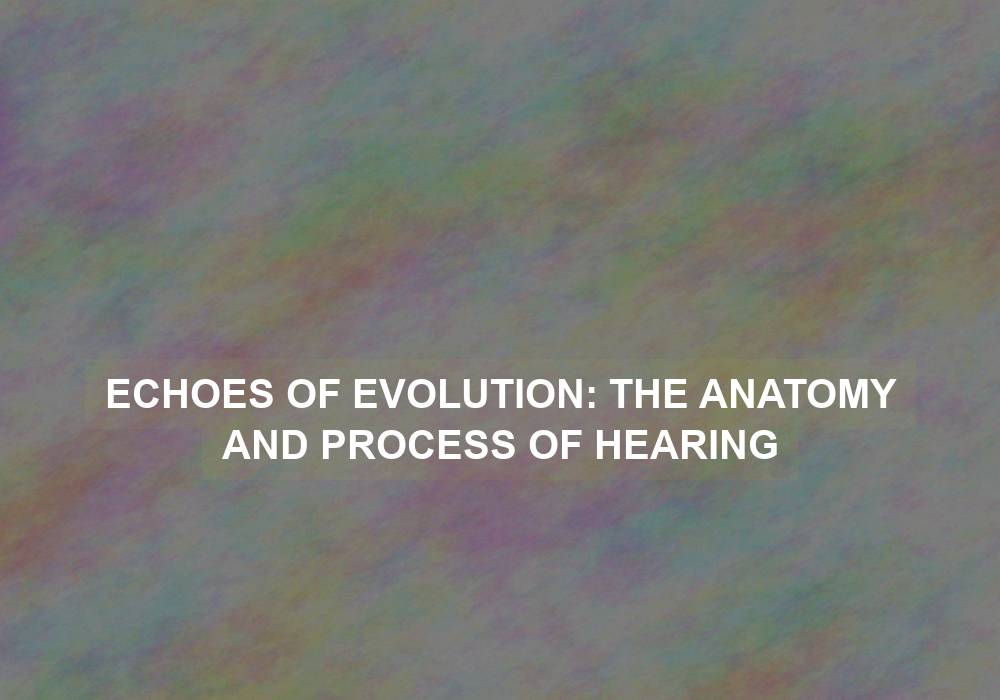
Our ability to hear is a remarkable phenomenon that has evolved over millions of years. The intricate anatomy and complex process of hearing enable us to perceive and interpret sounds from our environment. In this article, we will delve into the fascinating world of hearing, exploring its evolutionary origins, the structures involved, and the intricate…
